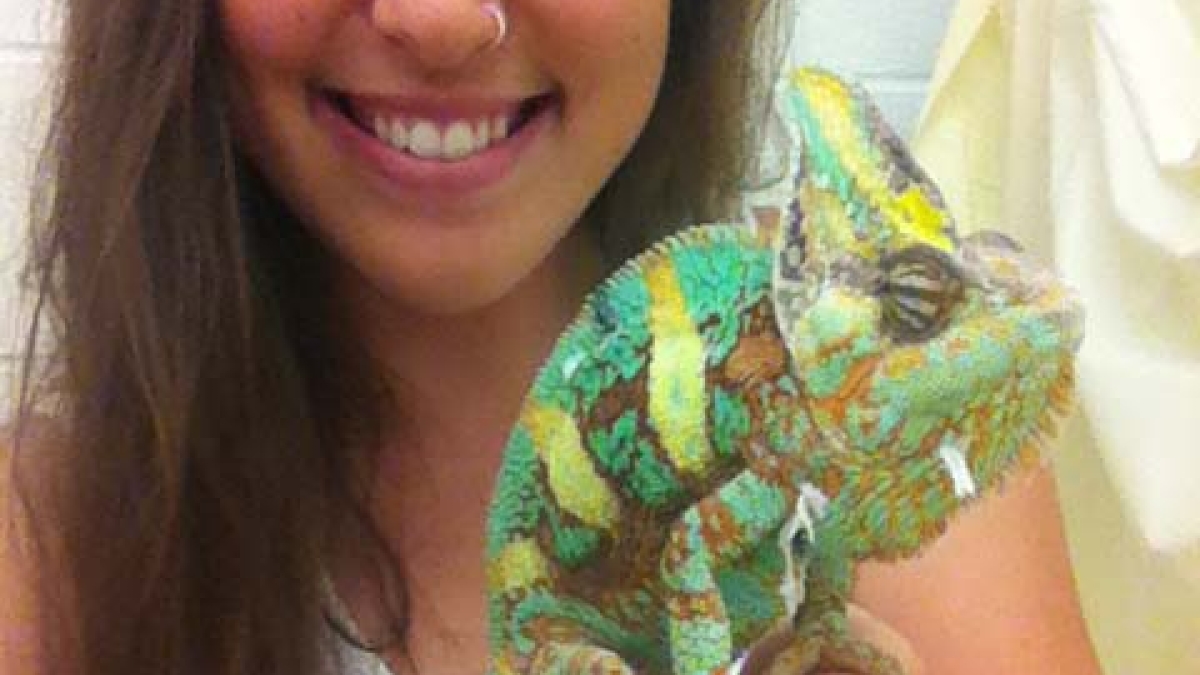Undergrad blends programs to study primate sociality

Megan Best began college intending to become a marine biologist. As she moved through her coursework, she realized the fit wasn’t right. Though she felt a calling to work with animals, she was also drawn to sociocultural anthropology.
During the two-week primatology segment of an evolutionary anthropology course, Best decided that was the field for her.
To create a solid academic foundation, the undergrad, who will graduate from Arizona State University in May, took on a double major: anthropology and biological sciences with a concentration in animal physiology and behavior.
Soon after redirecting her path, Best received a research award, and was teamed with noted primatologist Joan Silk, a professor in the School of Human Evolution and Social Change in the College of Liberal Arts and Sciences. Well-known for researching the evolution of social behavior in primates, Silk was the ideal mentor for the budding primatologist.
Under Silk’s direction, Best was given access to seven years’ worth of data on a group of female baboons’ grooming behavior.
Best was charged with applying mathematical modeling – organizing the data into a matrix showing who interacts with whom and how often – and constructing graphs illustrating social bonds among group members. Her goal was to determine if individual attributes, like age, rank and kinship, consistently affect social dynamics, as well as which other factors might be influential.
Though previous studies have been done in this area, they were short-term, looking at only a few months of data. Best’s perspective is far more wide and in-depth.
Recently, Best defended her honors thesis, “Social Network Dynamics of Female Chacma Baboons,” which is based on one aspect of her work with Silk. She hopes to build out her thesis and publish it in a primatology journal.
Throughout her research, Best has met weekly with Silk, whom she calls an amazing and inspirational mentor. Silk, too, has been impressed with Best’s insight and efforts, as well as her range of previous research. Since arriving at ASU, Best has studied chameleon color change, primate dentition, even education and radicalization in Islamic communities.
“Megan taught me as much as I taught her,” Silk says. “I put together the dataset that she used, but she is the one that made the project happen. She accepted the challenge of learning social network analysis methods with enthusiasm and did a terrific job.”
In July, Best will travel to Kenya with Silk to research female baboon sociology in the field. It will be Best’s first trip abroad and will last a year. After Kenya, Best is considering going on to the Max Planck Institute in Germany so that she can compare lab work and field work to decide where she wants to place her focus. Whatever she decides, she is certain that she wants to continue learning and being around animals.
That is no surprise to her parents, whom she credits with teaching her to be independent while providing encouragement. Dad Rich says, “Megan has always been compassionate and interested in animals, so I’m not surprised to see her following this path.”
Mom Shawne adds that her daughter is not only following her dreams, but has blossomed since coming to ASU. “After touring the different campuses she was considering, she told me she felt at home here and could see herself studying and growing in this place,” she notes.
Best certainly has come into her own, recently winning the Cynthia Lakin Award, which recognizes the recipient's contributions to anthropology at ASU.
She says during the first year of college, it was hard for her to wrap her mind around having responsibility: being away from home, taking on a job, attending classes full-time. Reflecting on why she had these feelings made her accountable. Now, she feels grounded and revitalized.
In her precious free time, Best enjoys Capoeira, riding her bike, being outdoors and also taking a “mental hiatus” at least once a week to recharge.
Her advice to new students is to take every opportunity to learn about themselves, and to be open to exploring new fields.
Also, she stresses, “Keep an open mind and look for opportunities to learn. They are all around, even in something as simple as noticing the way the birds interact as you’re walking to class. There is so much to learn every day.”